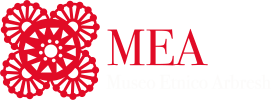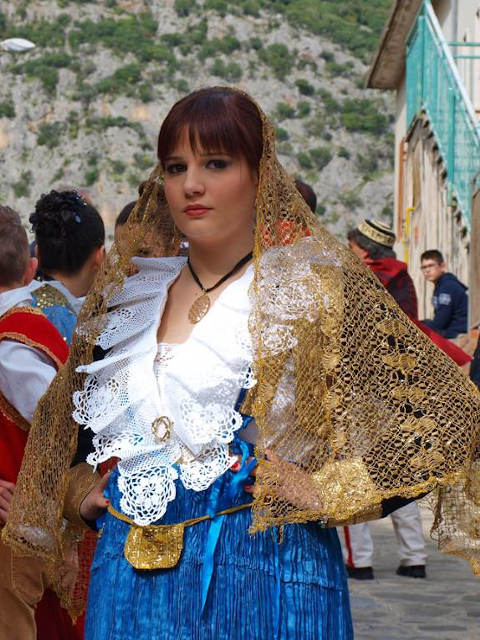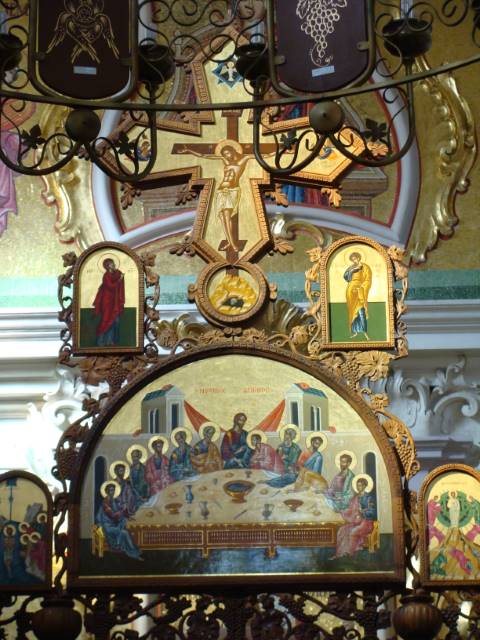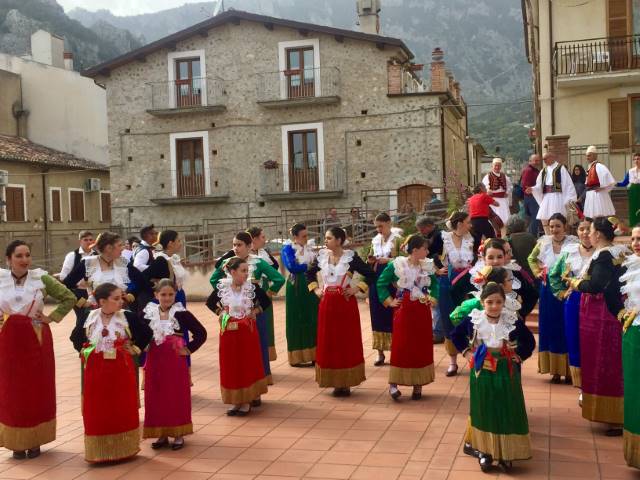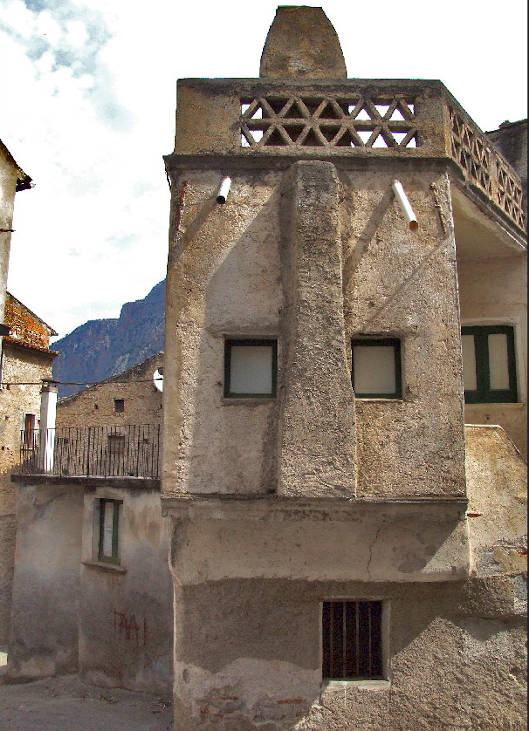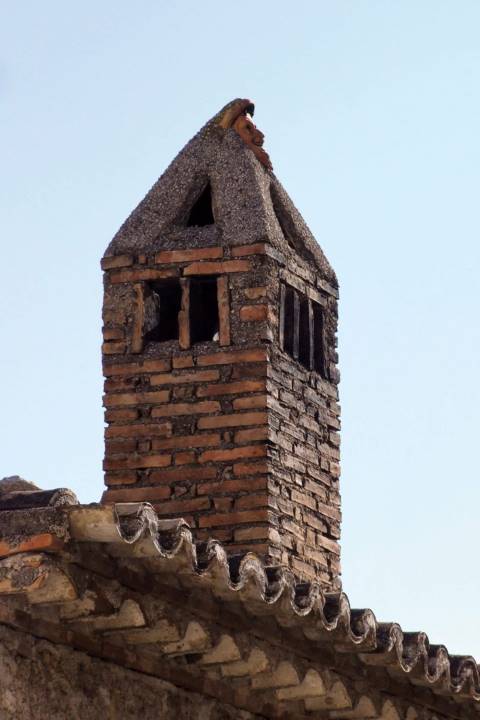Arbresh Museum
A small Louvre of the Arbëreshe civilizationThe Stages Of The Birth Of The Arbresh Museum
Housed in an ancient palace of Civita, which once was the municipal seat, it contains images, objects and documents that tell the tale of a culture that mixes elements of the Albanian motherland with others of the territories where it grew up. The result is a surprising journey into a world that is more than six centuries old, just waiting to be discovered and appreciated.
1970
1989
1994
The Different Rooms Of The Museum
The exhibition and research path of the ethnic museum consists of 4 rooms and some special sections.
The reception hall
The hall of costumes and vallja
Ernest Koliqi
In this room there are different types of women’s clothing on display; the everyday outfit, the “half-party” one and a wedding dress that can be admired when women wear it during the Vallje, a historical event that is celebrated on the Tuesday after Easter, to commemorate the victories of the Albanian hero Giorgio Castriota Skanderbeg against the invasion of the Ottoman Turkish Empire.
Different icons that represent the most typical expression of the Greek Byzantine liturgical tradition are the last element of the exhibition. In the arbereshe culture the churches with their liturgical furnishings and the scent of incense manifest the triumph of the spirit over matter.
The rooms are complemented by descriptive panels on the Vallje, the typical dances of Easter Tuesday, the liturgical functions of the Greek Byzantine rite and the furnishings of the Church of S. Maria Assunta, the social and urban characteristics of Civita, the gjitonìa (the neighbourhood), the characteristic chimneys and the anthropomorphic houses called “Case Kodra”, dedicated to the post-Cubist Italian Albanian artist Ibrahim Kodra and the historical figures of Civita.
The hall of civilization and peasant work
This is followed by the symbolic exhibition of some traditional objects of the agro-pastoral world: typical milk containers, rush baskets for cheese and ricotta, wolf collar and handmade wooden ladles. As a corollary, a picture gallery exhibits paintings depicting aspects of the rural world, the arbresh village and the colours of Arberia. The room also hosts objects of the art of carpentry and ironworking that remind us of the small furniture industry and the several ironworking workshops. The forges used to produce tools for donkeys and typical railings of balconies.Several keys for doors and entrance gates are on display, locks of various sizes and numerous irons for the donkey’s hoofs. In this room a wall screen shows historical and current photos of the Civitese community.
The room of the environment and history
On display in this room there also are objects for the preservation of oil and for baking and such as cupboards, shovels for bread and for focaccia and various sieves. There are also tools for cutting wood and for transporting donkeys.
Themes of the museum
The Arbëreshë
They are the descendants of the Albanians who, after the death of Skanderbeg in 1468, settled in southern Italy to escape the Ottoman Turkish domination that conquered the Balkans and Albania.
Civita
The Vallje
The Vallje are traditional ethno-choral dances, performed with choral chants (vjershë), evoking the victories of the national hero George Kastriota Skanderbeg against the Turks. They take place on the Tuesday after Easter; on this occasion the women wear the valuable traditional arbrësh costume.
The Pollino National Park
The Gjitonia
Gjitoni më se gjiri – “The neighbor is more intimate than a relative.”
The gjitonia, “the neighbourhood”, represents a central element for the life of the arbrësh community. The gjitonia is also an intangible heritage for the transmission of knowledge, and it establishes relationships of reciprocity and solidarity, establishing a relationship of trust between neighbours. It represents the fulcrum of sociality. Unlike wards, “gjitonia” are small clusters of houses often attached to each other (often understood as the smallest portion of urban fabric).
Kodra Houses
The Kodra Houses are anthropomorphic houses discovered in recent times and dedicated to the Albanian post-Cubist painter Ibrahim Kodra, defined “the primitive of a new civilization”. Kondra came to Italy from the court of King Zogu in 1939 and he moved to Milan where he came into contact with the artistic life of the post-Cubist movement. In 1997 Ibrahim Kodra visited Civita and the Arbëreshë countries, dedicating it the collection “Albania Fantastic”.
The chimneys
Another element that stands out are the chimney pots (çiminerja) characterized by original or geometric shapes, which interprets apotropaic values. They represent a sort of totem against evil spirits, protectors of the house and family property, the result of artistic inspiration, but also functional with respect to the technical requirements of good draught and contrast to the winds coming from the heights of Pollino and the Ionian coast.
The rural and artisan world
There are very few examples of a typical Albanian footprint in the labour world today, most of the original traces are preserved in the field of sheep-farming, in the phases of this work, and a set of anecdotes, tales, stories, songs, historical testimonies related to it that are still expressed in the Arbëreshe language.
Female handicraft is the second activity after agriculture practiced by the Arbereshe since they landed in Italy over 500 years ago. The rural handicraft, especially the feminine one, belongs to a very ancient tradition. This activity was not considered a peasant activity because in every house, even those owned by professionals, you could find a loom. A tradition that still lives on today, but in a very reduced form, is that of crochet and embroidery.
L’artigianato femminile è la seconda attività dopo l’agricoltura praticata dalle popolazioni che 500 anni fa sbarcarono sulle nostre coste. L’artigianato rurale specie quello femminile appartiene ad una tradizione antichissima. Questa attività non era considerata un’attività contadina perché anche nelle case dei professionisti c’era il telaio. Una tradizione che vive ancora oggi, ma in forma molto ridotta, è quella dell’arte dell’uncinetto e del ricamo.
Contact us
Do you want to visit the museum? Do you want more information about it? Don’t hesitate, contact us!
